How to Use System Restore in Windows 10
PAGE CONTENT:
- How to Create a Restore Point?
- How to Use System Restore
- How Long Does System Restore Take
- System Restore Alternative
Due to malware or misoperation, sometimes your computer might break down, or data loss may occur. Under this kind of occasion, most of the users do not have backed up their computer ahead, so the loss sounds unbearable.
Fortunately, Windows has a built-in feature called System Restore. It could save the breakdown system, and restore your computer to an earlier point in time. In the next parts, we will tell you what is System Restore, how to create a system restore point, and how long does the restore takes.
What is System Restore?
System Restore means bringing your Windows installation back to its last working state without reinstalling the operating system or damaging data files. This is a Windows built-in feature that first appears in Windows Me. System Restore could recover the registry, local configuration files, COM+ database, Windows File Protection cache (wfp.dll), WMI database, Microsoft IIS metadata, and utilities are copied to "Restore" by default Files in the archive. Generally, users do not need to enable the System Restore feature manually. It is turned on by default but requires your disk has 200MB of space available.
How to Create a Restore Point?
To perform a system restore, you need to create a restore point first. The restore point is an image of the system configuration and settings in the Windows registry. In both System Protection and the Backup and Restore Center, you can manually create a restore point from it. The following steps show you how to create a restore point.
Step 1. Type "create a restore point" in your computer's search bar. Click the result to enter.
Step 2. Under the "System Protection" tab, click the "Create" button.
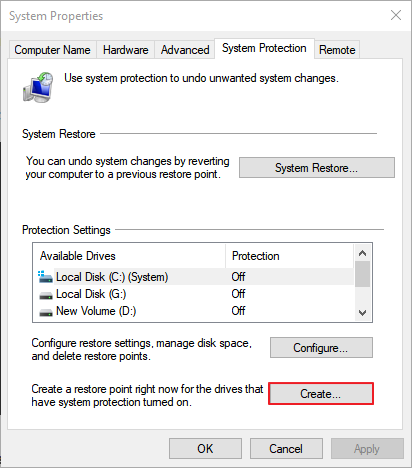
Step 3. Type a description for the restore point you created, and then click "Create".
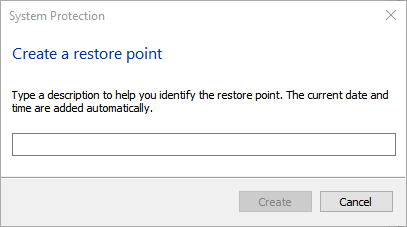
In System Protection, you can also start a system restore, configure restore settings, manage disk space, and delete restore points.
How to Use System Restore
The steps below show you how to use the System Restore. Restoring won't affect your personal files, but it will remove apps, drivers, and updates installed after the restore point was made.
Step 1. Search Control Panel in Windows search box, and click the best match result to enter.
Step 2. Click "Recovery" in Control Panel, and select "Recovery" > "Open System Restore" > "Next".
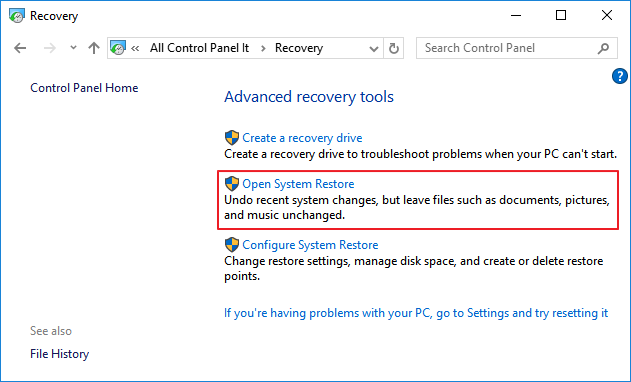
Step 3. Choose the restore point related to the problematic app, driver, or update, and then select "Next" > "Finish".
How Long Does System Restore Take
The time a System Restore takes depends on the number of files on your system. If the restore point just created a few days ago, the whole process should only take 25 to 40 minutes.
System Restore Alternative
Although System Restore can save you from an OS crash situation, it isn't flawless. Here, we'd like to introduce a more powerful backup and restore tool as the alternative to Windows System Restore.
Qiling Backup is designed for protecting your data with simple clicks, and restore everything instantly. It is capable of backing up the Windows system along with user settings, and restore your system quickly once it crashes. What's more, it supports users to create computer data backup with three backup types, including full backup, differential backup, and incremental backup. And users can also apply this tool to clone or migrate their system to a new hard drive or computer without reinstalling the system and applications.
Here you can download Qiling Backup from the button below, and follow the guide to see how to make a system backup.
Step 1. To backup only Windows 10 on your computer, please directly choose the option "System backup" on the "Backup and recovery" home page.
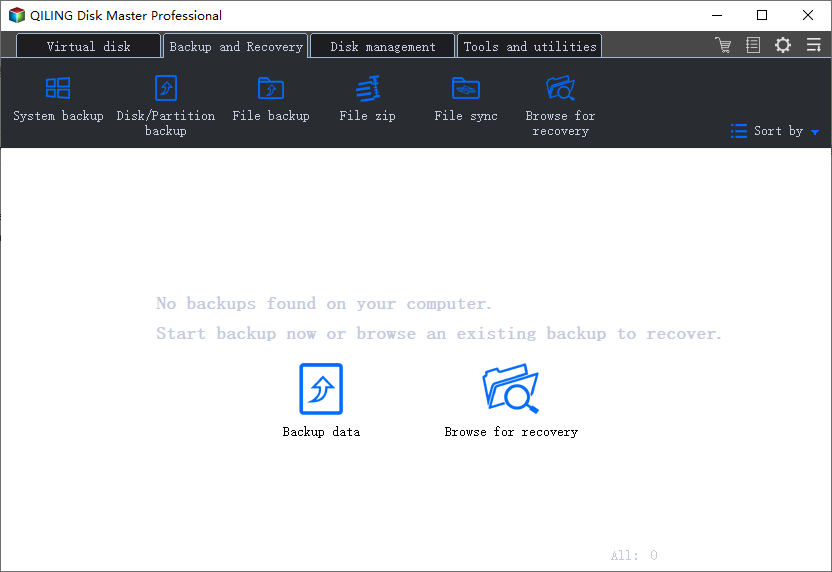
Step 2. Now in the next window, where you can customize your own Windows 10 backup by choosing a backup location(HDD, USB hard disk, network drives, Cloud drives...), adding a plan name and text description to it.
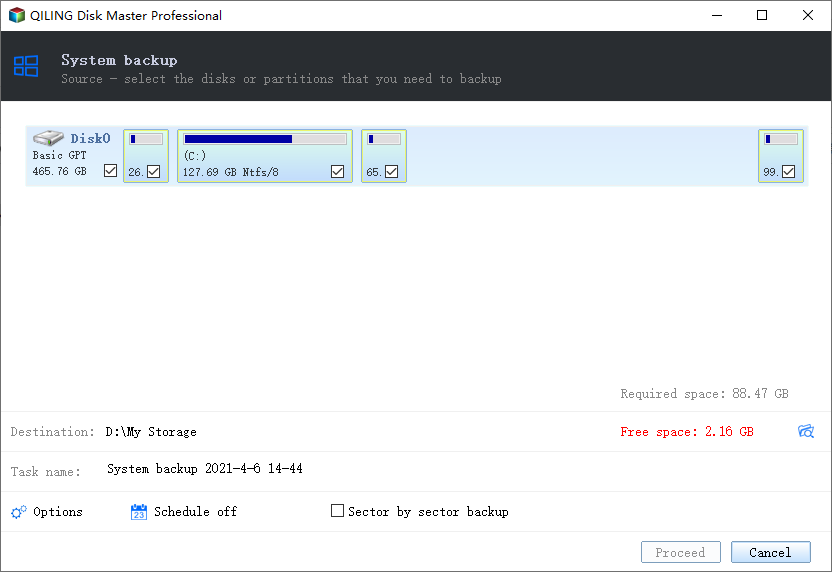
Since it's about backing up OS, it's significant to turn on the "Schedule", where you can enable an automatic Windows 10 backup at a set time like daily, monthly...or upon an event, telling the Windows 10 backup to start when system startup, system shutdown, user logon or user log off.
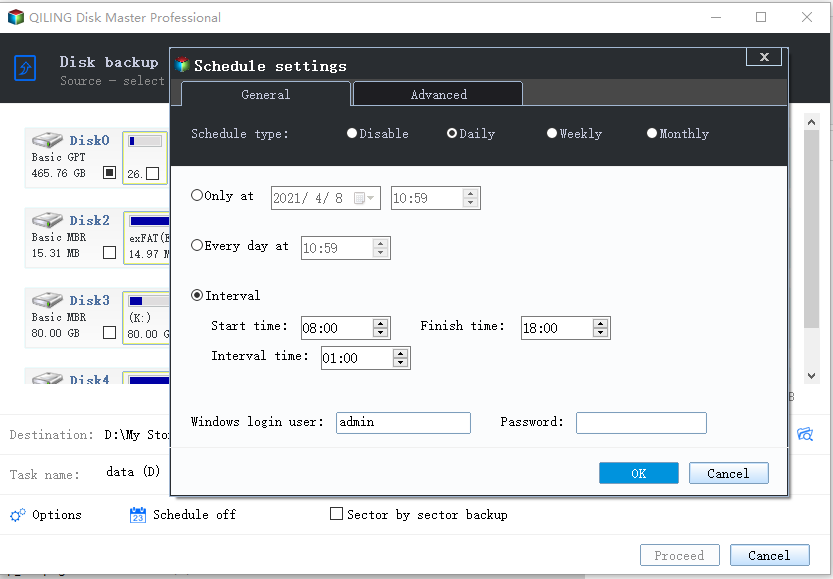
Step 3. Once all the basic settings were made, click "Proceed". Wait for a while you will create a full Windows 10 backup to protect your system from unexpected disasters.
Note: To backup Windows 10 to an external storage device, you must ensure that the storage device has been correctly connected to your computer in advance. Click the "Browse" button in the "Destination" area, you can choose the connected hard disks as a backup location. Also, the software supports many more paths to save your Windows 10 backup, including the cloud devices of OneDrive, GoogleDrive and DropBox, and Network/NAS devices.
FAQ
1. Which versions of Windows have the system recovery function?
Windows Me, Windows XP (Home and Professional Editions), Windows Vista (all editions), Windows 7 (all editions), Windows 8 (all editions), and Windows 10.
2. What's the difference between a system restore and file backup?
System Restore only monitors a set of core system files and certain types of application files (such as .exe or .dll), and records the status of these files before the change; while file backup is to back up the user's personal data files to ensure store a safe copy on a local disk or other media. System Restore does not restore changes made to personal data files (for example, documents, graphics, emails, etc.).
3. Do users need to manually turn on system restore?
They don't. The System Restore is automatically turned on, but at least 200M of free hard disk space is required. If the hard disk does not have 200M available space, the System Restore function will be automatically disabled, and it will be turned on again once there is enough space.
Related Articles
- Create System Image on USB Drive in Windows 10/8/7
- [Solved] This Application Was Unable to Start Correctly (Error Code: 0xc000007b)
- How to Create a Windows 10 Recovery USB for Another Computer
- Make External Hard Drive Bootable in Windows 10
- Hard Disk Backup in Windows 10/8/7 [Beginners' Guide]